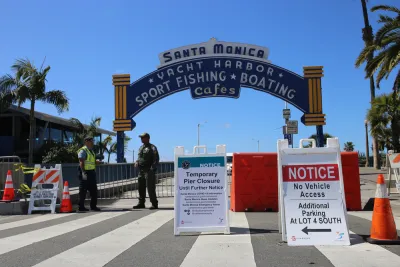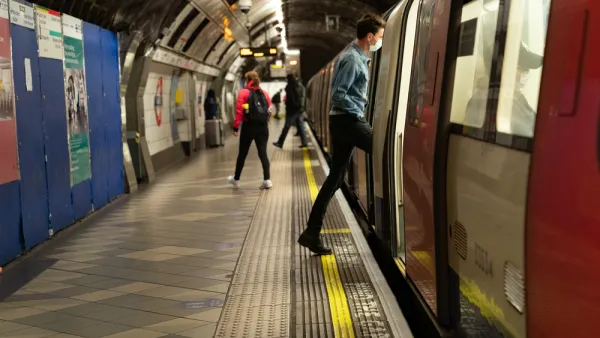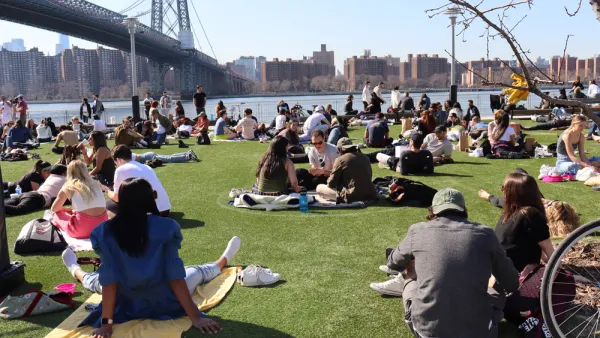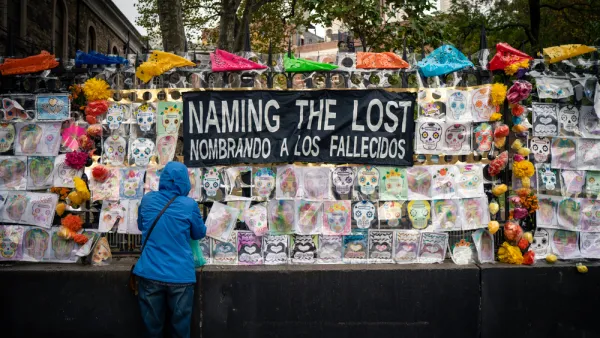Analysis of cell phone location tracking data shows changes in how Californians have moved around since the pandemic.

How have the mobility patterns of California changed since March 2020 due to the pandemic? Mobile phone location data can help to answer this question. As reported by Phillip Reese, Google has compiled large amounts of cell phone location tracking data as part of its ongoing effort to help leaders around the world to gauge the impact of COVID-related closures and travel restrictions. Collected from phones with location trackers enabled, the mobility logs show patterns of trip frequency—available at national, state and regional levels—in daily snapshots from early 2020 through early March 2021. The baseline for comparison in terms of trip frequency is the first five weeks of 2020, before California and the United States initiated broad COVID-related restrictions.
Some of the key findings of this analysis are:
- In the early weeks of 2021, Californians are staying home way more than we did in our pre-pandemic life.
- Californians are using cars rather than resuming pre-COVID commute patterns on public transit, i.e. buses and trains, which is a trend with troubling implications for transit services and the environment should it become long-standing.
- As of early March 2021, travel for retail and restaurants was back to 26% below the baseline, while grocery and pharmacy trips were 11% below.
- Work-related travel showed the most sustained disruption, at 33% below the baseline.
- Californians are heading out to shop, dine, and work far more now than in March 2020, when the state issued its first sweeping stay-at-home order.
Please read the source article for more details, including informative graphs and maps.
FULL STORY: How COVID-19 Has Changed Movement in the Nation's Most Populous State

Analysis: Cybertruck Fatality Rate Far Exceeds That of Ford Pinto
The Tesla Cybertruck was recalled seven times last year.

National Parks Layoffs Will Cause Communities to Lose Billions
Thousands of essential park workers were laid off this week, just before the busy spring break season.

Retro-silient?: America’s First “Eco-burb,” The Woodlands Turns 50
A master-planned community north of Houston offers lessons on green infrastructure and resilient design, but falls short of its founder’s lofty affordability and walkability goals.

Test News Post 1
This is a summary

Analysis: Cybertruck Fatality Rate Far Exceeds That of Ford Pinto
The Tesla Cybertruck was recalled seven times last year.

Test News Headline 46
Test for the image on the front page.
Urban Design for Planners 1: Software Tools
This six-course series explores essential urban design concepts using open source software and equips planners with the tools they need to participate fully in the urban design process.
Planning for Universal Design
Learn the tools for implementing Universal Design in planning regulations.
EMC Planning Group, Inc.
Planetizen
Planetizen
Mpact (formerly Rail~Volution)
Great Falls Development Authority, Inc.
HUDs Office of Policy Development and Research
NYU Wagner Graduate School of Public Service




























